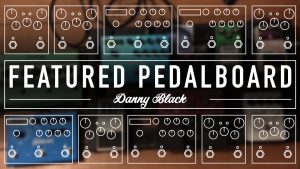
Pedalboard Feature: Danny Black
Daniel Schwartz of Good Old War has a new acoustic solo project named Danny Black. Below he shares two presets he used for his new
Free US Shipping On Orders Over $49
Easy 30-Day Returns
Financing Available Through ![]()
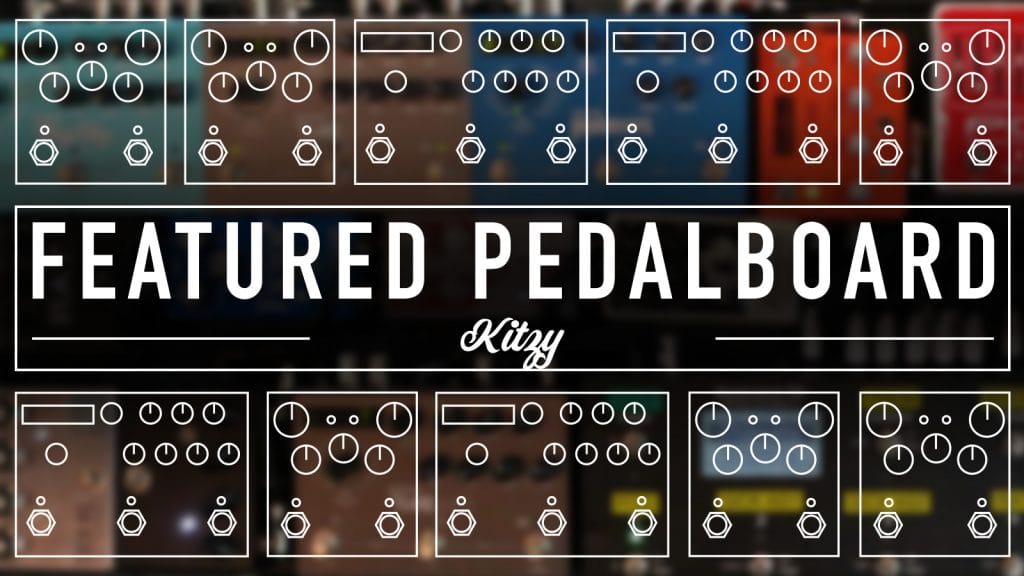
One of my favorite parts of monitoring social media for Strymon is seeing everyone’s pedalboards and hearing so many wonderful musicians worldwide. Twitter is where I first came across Kitzy. Kitzy had posted his beautiful board, and it was one of those boards that is hard not to be in awe of. Luckily, Kitzy was happy to share all the details about his board, including a YouTube video he made (below) with everything you’d want to know!
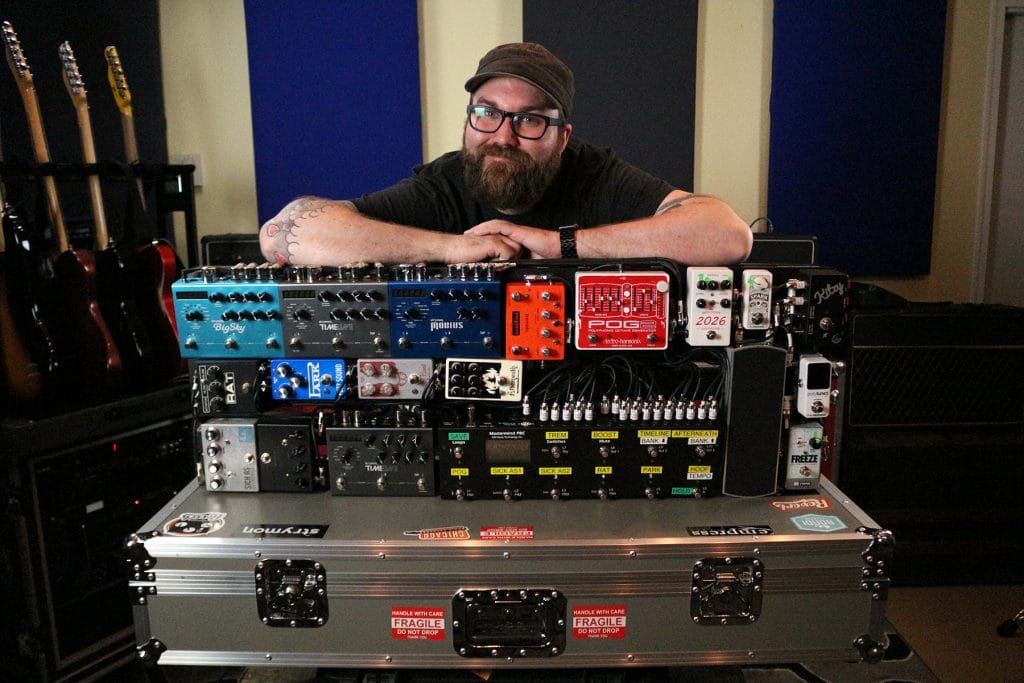
My signal chain starts with a custom Interfacer from Goodwood Audio (goodwoodaudio.com). My guitar plugs into a buffered input which then goes directly into a Bondi Effects 2026 Compressor that is always on. From there, it goes to the first input of the Strymon Mobius (in pre/post mode). The first output of the Mobius goes into the RJM Mastermind PBC.
From there, the pedals are each in their own dedicated loop.
Loop 1 – Electro-Harmonix POG2
Loop 2 – Bondi Effects Sick As Blackout (used for low gain)
Loop 3 – Bondi Effects Sick As MKII (used for medium gain)
Loop 4 – Keeley-modded ProCo RAT (used for high gain)
Loop 5 – Earthquaker Devices Park Fuzz
Loop 6 – Earthquaker Devices Cloven Hoof Fuzz
There’s an insert point after loop 6, where my signal goes to my Ernie Ball VP Jr, and then into the second input of the Mobius. This gives me the option to put the Mobius pre or post gain on a per preset basis. From the Mobius’ second out, the signal goes to a small normalized loop box on the side of my board that can act as an insert point for any effects I want to add in addition to what’s already on the board, or it can be used to run the rest of the board in an amp’s effects loop. After that, it goes back into the PBC.
Loop 7 – Empress Tremolo 2
Loop 8 – TC Electronics Spark Boost
Loop 9 – Strymon TimeLine
Loop 10 – Earthquaker Devices Afterneath
From here, the signal splits from the PBC’s two outputs. The first output goes into the Electro-Harmonix Freeze, and then to the “dry” output of the custom Interfacer. The second output goes into another custom junction box from Goodwood Audio. This junction box takes the dry signal and sends it to both the second TimeLine and the BigSky in parallel, and it also feeds the output of the TimeLine into the BigSky, so I can still get reverb on the delay repeats. The TimeLine and BigSky are in kill dry mode, so the only thing coming out of these are the repeats and reverb, no dry signal. The left and right outputs of both the TimeLine and BigSky are then routed back into the junction box, where the signal is summed into a single stereo signal which then gets routed to the left and right wet outputs of the custom Interfacer.
The interfacer is set up to feed the signal to three amps in a wet/dry/wet configuration, but it has a couple switches that let me change that configuration to two amps, either in wet/dry, or in stereo with wet and dry going to both amps, or I can sum everything down to a single signal if I’m only using one amp.
The entire board is powered by a Strymon Zuma and three Strymon Ojais.
I’m using MIDI from the PBC to control presets on both TimeLines, the BigSky, the Mobius, the POG2 and the Empress Tremolo 2.
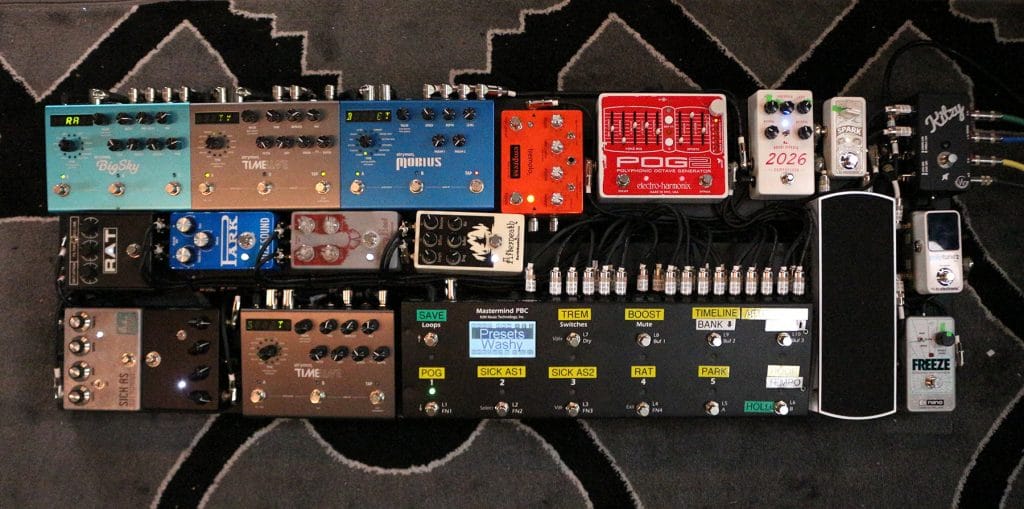
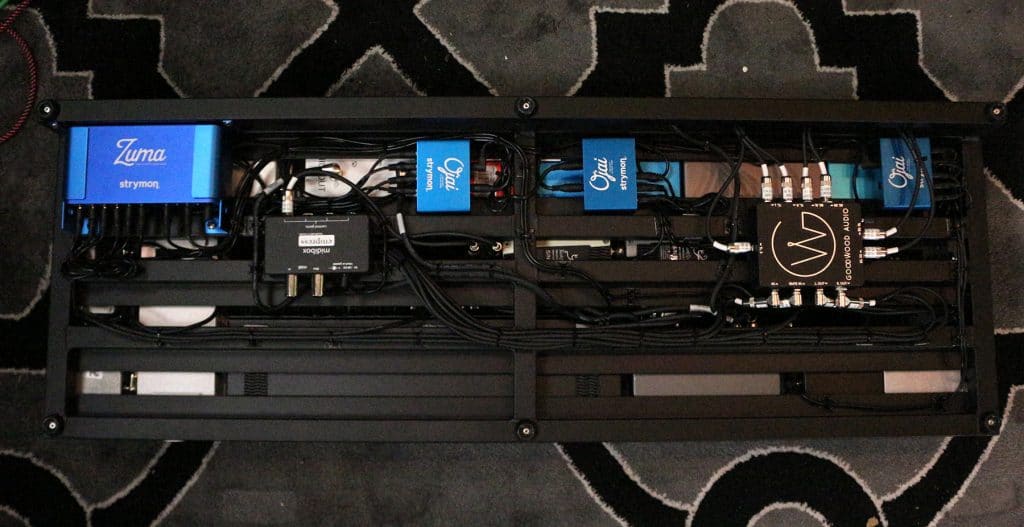
Can you tell us how you use your two TimeLines?
The answer I usually give is time travel – I have a TimeLine and an alternate TimeLine.
The real answer is that they’re in two different points in the signal chain and serve two different purposes. The first TimeLine is for when the delay is an integral part of what I’m playing – think U2’s Edge doing dotted 8th stuff. The second TimeLine is more for when the delay should be more of an ambient background to help fill the space. I often use both at the same time.
You have an extensive collection of pedals. What do you enjoy most about using pedals?
When I started playing guitar in bands I was very heavily involved in the punk scene, and if you had asked me about pedals then I would have laughed at you and told you that the only thing I needed was a guitar plugged into an amp with the gain cranked.
As I got older, my music tastes expanded quite a bit and I got into more indie and experimental stuff. I started with a TS9 and a DL4, and my friend gave me an old Big Muff that he wasn’t using. Then I discovered Reverb.com and fell down the rabbit hole of pedalboards on YouTube, and just became enamored with the options available. I’ve been digging on Reverb for cool pedals ever since.
The thing I like most about using pedals is the seemingly endless sonic possibilities. I love coming up with as many different sounds as I can.
Please tell us about your band Death & Texas?
Death & Texas is a collaboration between myself and my good friend Caleb. Caleb was the bass player in Long Since Forgotten, and after they split up Caleb and I were in a short-lived band together in Syracuse, NY. That band split when I moved to Chicago and Caleb moved to St. Louis. About two years ago, Caleb and I both moved in together in Oakland, CA and started writing. That became Death & Texas.
We’re still working on finishing our first record, but we’ve both since moved back to our hometowns to be closer to family, so we’re taking a bit of a break until we can dedicate some time to finish it.
You can hear a couple of our finished songs here:
iTunes
Spotify
What project are you currently working on?
My current project is called Freelance Astronaut, which is an instrumental post rock project where I play guitar and do looping with Ableton Live. I haven’t released anything yet, but you can follow me on Facebook or Twitter to be notified when I release something later this year.
Subscribe to our newsletter to be the first to hear about new Strymon products, artist features, and behind the scenes content!

Daniel Schwartz of Good Old War has a new acoustic solo project named Danny Black. Below he shares two presets he used for his new
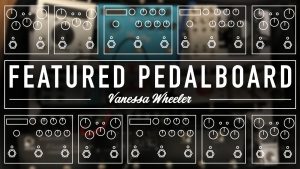
LeoLeo is a duo of talented long-time friends, Vanessa Wheeler (songs/guitars/vocals) and Sarah Hope (drums/electronics/production). Their music ranges from dreamy soundscapes to fast-paced rock songs.
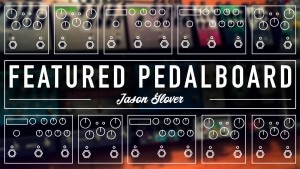
Jason Glover emailed us a picture of his pedalboard and I think you might agree that is a looker! I had to know a little